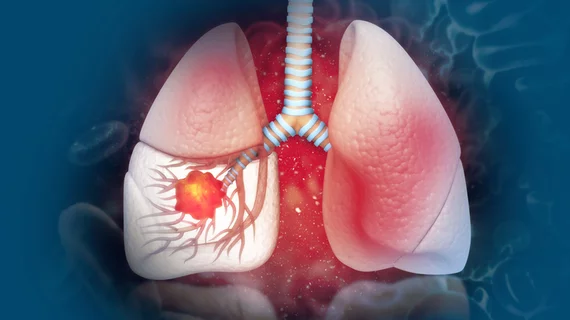Lung cancer screening rates are slowly increasing, but still, less than 1 in 20 eligible adults receives a low-dose CT exam in the United States, according to new figures published on Thursday.
Researchers led by the American Cancer Society used data from a national lung cancer registry for their findings, published in JNCI: The Journal of the National Cancer Institute. The team noted that utilization rose slightly from 3.3% in 2016 to 5% in 2018, but still remains relatively low.
Stacey Fedewa, PhD, with the ACS, also pointed out that state-level screening rates are not aligned with disease burden in many regions.
“The increasing but low utilization of lung cancer screening reflects both ongoing efforts to screen eligible adults, and the many challenges to do so," Fedewa said in a statement. "Kentucky, which has supported screening implementation efforts, is unique as its screening rates are over twice the national average and four-times that of other high lung cancer burden states like West Virginia and Arkansas."
The Centers for Medicare and Medicaid Services began covering LDCT for eligible Medicare patients 55-77 years in 2015, following recommendations from the ACS and others. Previous reports indicate, however, that uptake remains low. And lung cancer still sits as the leading cause of cancer death in the U.S.
With this in mind, the team looked at how states’ LDCT screening rates correlated with lung cancer incidence, sociodemographic status and access to screening. Fedewa et al. used the American College of Radiology’s Lung Cancer Registry to complete their work.
At the state level, many in the Northeast, such as Massachusetts and Vermont, have lower cancer deaths per person (less than 44 per 100,000), but screen up to 15% of their eligible population. That’s compared to Southern states, like Mississippi and Arkansas, with more than 50 deaths per 100,000 that screen less than 4% of adults.
More needs to be done at all levels to ensure regions with more smokers and higher lung cancer rates are supporting LDCT efforts, the researchers explained.
"Deliberate effort from various stakeholders such as policymakers, cancer control, health systems, and providers are needed to boost lung cancer screening rates among eligible adults with a heavy smoking history, a group facing multiple barriers to lung cancer screening and cancer care," the authors said in the study. "If states know what their lung cancer screening rates are, they can set a goal and track progress toward it."

